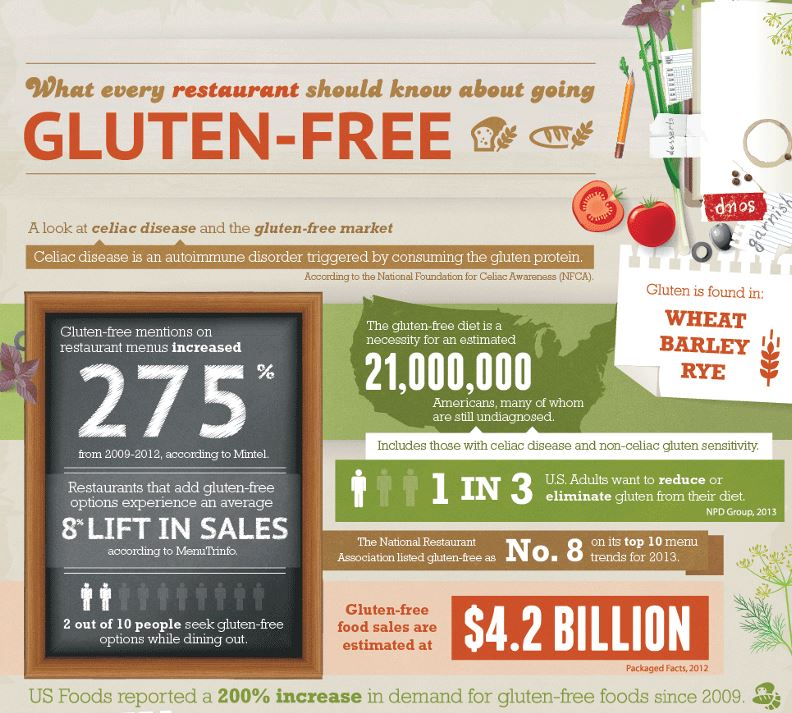Celiac Disease Statistics
Celiac disease diagnosis have been on the rise since 2000, with the year 2013 showing no signs of remission. Celiac disease causes wheat, barley, rye and some oats to damage the small intestine, preventing the body from absorbing vital nutrients. Celiac disease is just one type of gluten intolerance that has become more prevalent in the last decade. Why wasn’t this epidemic discovered before now? And what does this mean for consumers?
Scientists at Mayo Clinic have taken many blood samples dating back 50 years and compared them to recent blood samples. They determined that humans today are four times more likely to have Celiac disease. Given the research, there is still significant push back to the gluten trend. Many analysts believe gluten-free diets are just another fad diet used to fuel marketing campaigns.
The gluten-free push back is fueled by the sudden shift in grocery store labeling and food packaging. Everywhere we look, there is gluten-free pizza, cookies, bread, pasta… – the list goes on and on. Gluten-free packaging is working very well, too. Gluten-free products now account for a $12.4 billion annual market, and rising.
Hundreds of brand names have launched solely to cater to those with gluten intolerance. Whole Foods supplies consumers with a huge list of gluten-free products within their stores. Names like Glutino and Glutenfreeda leave little to imagination when determining their target consumers. Common household names such as Pillsbury have also jumped on the gluten-free bandwagon.
What it Means for Material Handling Companies
Celiac disease means big business for material handling companies. Dozens of industries are feeling the fallout of the “Gluten-Free Boom.” The material handling industry is no different. If a warehouse isn’t seeing increased volume due to gluten-free products, there are plenty of companies willing to take their fair share.

Companies don’t need to go strictly gluten-free to see results. Restaurants that added gluten-free options to their menus saw an 8% increase in revenue on average. Incredibly, one in five people seek gluten-free menu options when dining out! That demand is flowing through restaurants and grocery stores right to the handlers.
According to ISM, there was a 6% increase in manufacturing jobs from June to August of this year. This growth is primarily caused by the specialty food demand, including gluten-free foods. That’s staggering growth for a two month period in any industry, and it’s one to be proud of.
The FDA is implementing strict cross-contamination and storage regulations to prevent any gluten from coming into contact with food intended for those diagnosed with celiac disease. For most organizations, cross-contamination is already a non-issue. The material handling industry is welcoming the gluten-free craze with open arms.
Now is the time for food processing plant’s to flaunt their cross-contamination attributes. It’s imperative to have a zero-gluten food processing area. Many warehouses and distribution centers have caught on and primarily service the gluten-free industry. It takes a significant investment to swing a warehouse to serve a niche industry, but making all the right moves can prove to be a profitable decision.
Want more material handling news? Stop by our material handling blog each week and join the conversation on Twitter!


